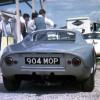I wanted to know more about the 1906 Coupe des Voiturettes at Rambouillet and reading numbers of l’Auto of the year via Gallica I was able to get an overview of the event but ultimately was puzzled by a few questions. So I take the risk to share them with you in the hope that somebody can help me to solve them.
For example, Charles Faroux and Géo Lefevre, who were the permanent reporters and promoters of the race often post a table of the qualified cars for the next day of the event. One of these cars, driven by a Mr Pellegrin, is officially named “Auto-Stand” most of the time but appears sometimes as a De Dion Bouton and this, more and more as the race goes on. At some point we can learn that this car is the personal De Dion of Pellegrin, a car “which has already done 12000 kilometers during travels and races”, notably at the “Coupe du Matin”, earlier in the year where it was clearly designed as a De Dion Bouton.
I found an ad for a car salesman named “Auto-Stand” in a 1906 number of L’Auto, could it be Mr Pellegrin’s garage ? And if so, can it be said that Auto-Stand is the entrant of that De Dion-Bouton, which would be, de facto, a “privateer” car, as opposed to the official Delages, Peugeots, Sizaires, etc ?
During the seven days of the race, in that same table, there is always a difference between the two Delage, Number 3 (Pessonneaux) has a 100 mm bore for an imposed minimum weight of 646 kg and Number 14 (Menard) 106 mm for 719 kg. Can someone tell me if it is a typo or a real difference ,as the Type A , the 1906 model, is referred to have a 106 mm De Dion engine ? I know De Dion made 100 mm engines.
I have other questions about engines, which could well show my lack of culture, but there is also mention, from time to time, of De Dion engines in the Vulpès or le Métais. I even read somewhere I can not recall that the Alcyon was a cousin of the Peugeots. So if anybody has some light to share on this long-forgotten subject, I would be very grateful.














